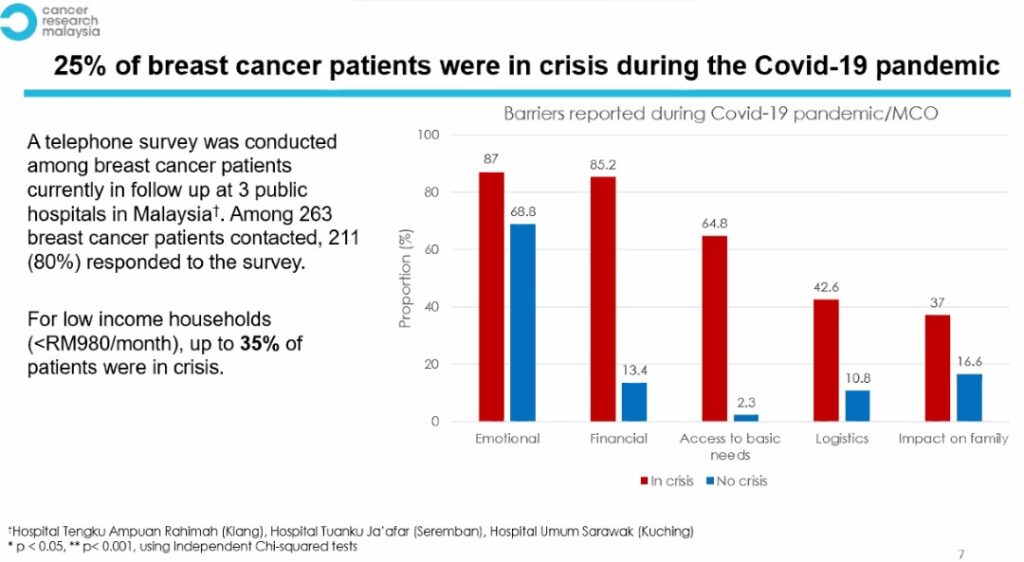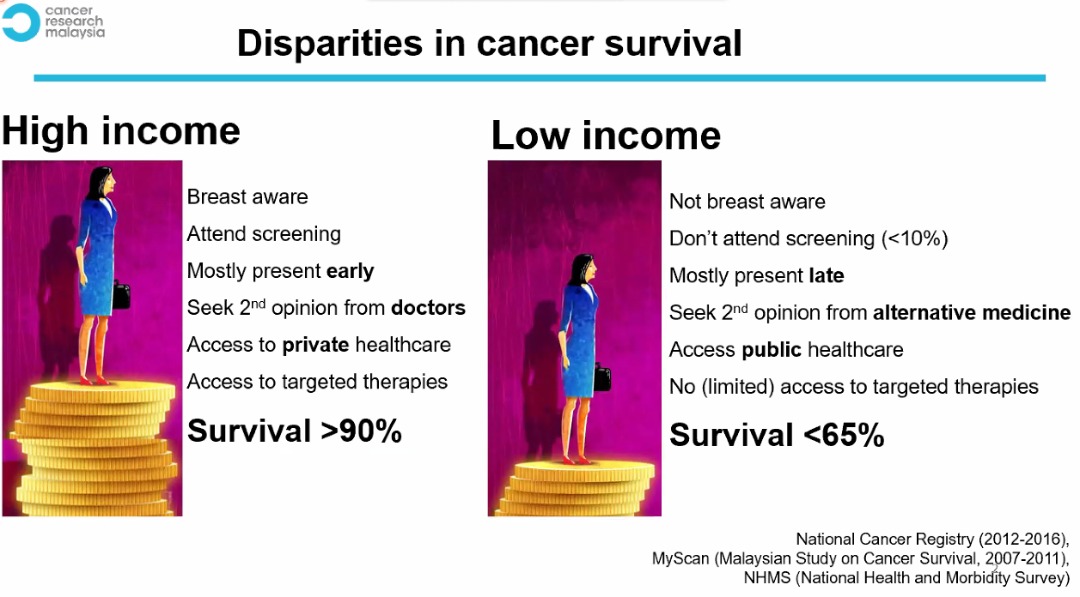KUALA LUMPUR, Oct 28 — High-income breast cancer patients in Malaysia have a survival rate of over 90 per cent, at least 25 percentage points higher than low-income patients with a less than 65 per cent chance of surviving the disease, according to data compiled by Cancer Research Malaysia (CRMY).
CRMY patient navigation programme manager Maheswari Jaganathan — who cited figures derived from the National Cancer Registry 2012-2016, the Malaysian Study on Cancer Survival 2007-2011, and the National Health and Morbidity Survey 2019 — noted that high-income patients were more likely to get screened for breast cancer, compared to less than 10 per cent of low-income breast cancer patients who get screened.
Wealthy breast cancer patients also can obtain targeted therapies. Less privileged women have limited access to these newer treatments in public hospitals.
“If you look at the survival rate among breast cancer patients in Malaysia, it is improving; but it is (mostly) among high-income women. If you look at low-income women, there is a higher prevalence of late-stage presentation and most (of them) get their second opinion in the form of alternative medicine.
“Their access to health care services are also limited to public facilities compared to private facilities for high-income breast cancer patients. Therefore, their survival (rate) is lower compared to women in high-income groups,” Maheswari said at Galen Centre for Health and Social Policy’s “Improving Access To Cancer Treatment And Care” virtual conference recently.
It was later pointed out during the conference that Malaysia’s ratio for radiotherapists and oncologists stood at 3.6 per million population, whereas the global average is 10 per million population — and most of these experts are in private health care settings in Malaysia.

Maheswari also noted that up to 35 per cent of breast cancer patients in low-income households (income of less than RM980 per month) surveyed via telephone interview during the Covid-19 pandemic were in some form of crisis — whether emotionally, financially, logistically, the lack of access to basic needs, or issues affecting their families.
Overall, the survey found that 25 per cent of 211 breast cancer patients at Tengku Ampuan Rahimah Hospital in Klang, Tuanku Ja’afar Hospital in Seremban, and Sarawak General Hospital in Kuching, who responded to the survey, were in crisis during the Covid-19 pandemic.
The majority of respondents reported high emotional and financial impact at 87 per cent and 85.2 per cent respectively. The former refers to treatment disruption, absence of emotional support, fear of Covid-19 infection, and uncertainty about the future, while the latter includes loss of income, inability to pay for cancer treatment, and difficulty in paying rent and utilities.
CRMY was able to improvise and continue its patient navigation programme during the early phase of the pandemic last year, which included supportive care such as providing medical equipment, essential food, and pre-loved clothes, as well as hospital admissions.
Maheswari said despite the many challenges and constraints involving resources, CRMY along with its partners at the Ministry of Health, as well as its private and community partners, were able to navigate 751 newly diagnosed breast cancer patients in 2020.
According to CRMY, low-income patients, in general, are nearly two times more likely to die of breast cancer each year due to delayed diagnosis and limited access to treatment.
With an average age of 50, many of these women are dying at the prime of their lives with the number of breast cancer cases expected to rise as cost of treatment increases post-pandemic.








